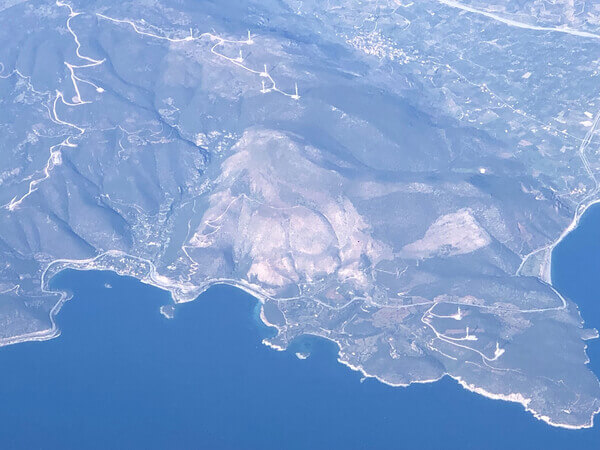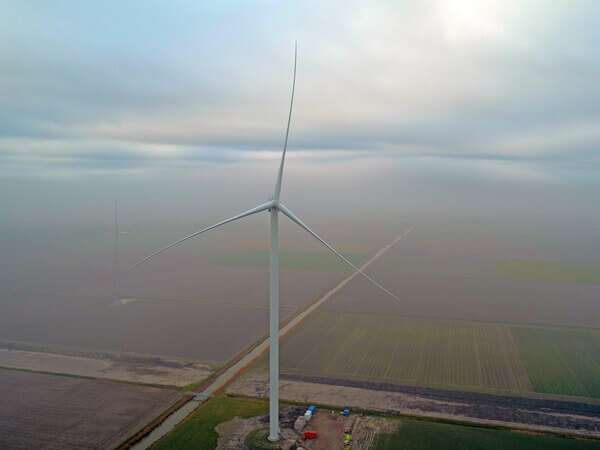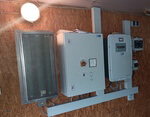News Release from GE Vernova
Wind Industry Profile of
High Wind: GE’s First Greek Wind Farm Stretches From Sea To Sky
In 1982, Greece opened Europe’s first commercial wind farm on the island of Kythnos. And the country is already on target to exceed the European Union’s mandate that all members generate 18 percent of their energy from renewables by 2020. The government’s ambitious plan to double that by 2030 means Greece should, in a decade, see more than half the electricity it consumes come from renewables.
Yet expanding wind capacity also has its challenges in Greece, primarily due to the country’s geography: The coast tends to be mountainous, with quick descents to the ocean, meaning wind farms often need to be developed on hillsides and mountaintops. Because of the challenging terrain, most Greek wind farms have been relatively small projects of three to 12 turbines each, says Panagiotis Gatos, senior sales manager at GE Renewable Energy.
That’s why the opening of GE’s first wind farm project in Greece this week is a milestone in what’s expected to be a record year for new wind-energy capacity in the country. The single largest year for Greek wind power was 2011, when 313 megawatts were brought online, according to data from the Hellenic Wind Energy Association. This year alone, Greece could install 400 MW, says Andres Antas, senior project manager at GE Renewable Energy — and GE’s just-completed Fokida wind farm will supply a fair chunk of that capacity.
The new farm is located in central Greece along the Gulf of Corinth. Nostira Renewable Energy, a three-year-old renewable energy developer, runs the farm and owns a 20% stake in the project. The remaining 80% belongs to Fortress Investment Group LLC. Fokida is the first of a series of three wind farms GE is constructing for Nostira that, by year’s end, should place the developer among the top eight wind producers in the country, with about 110 MW of total generation, according to data from Nostira’s website and the Hellenic Wind Energy Association.

The newly completed Fokida wind farm in central Greece has turbines stationed at three elevations: sea level, 500 meters and 1,000 meters. With blades 50 meters long, the turbines took eight hours to haul up the mountain pass, an arduous but worthwhile task: Each can generate 3.2 MW, making the farm a crucial element of Greece’s ambitious renewable energy goals. (Image: GE Renewable Energy)
Fokida is split into three parts: a sea-level pad with three turbines, another site of six turbines at 500 meters, and three more turbines in a final section at 1,000 meters. The project uses GE’s 3.2-103 turbines, which generate 3.2 MW apiece. GE began construction on the site last July, a painstaking endeavor. To transport the turbines’ 50-meter blades through the hairpin turns up the mountain took eight hours. At the top, some of the 30-person construction crew had to work at a height of 1,085 meters above sea level — or 3,600 feet — at times. “The views from the top of the mountain are incredible,” Antas says. The accompanying video from Nostira provides an overview of some of the construction.
GE is currently building two more 28.8 MW wind farms for Nostira, both in Boeotia on the Gulf of Corinth: Korobili is fully installed and awaiting commissioning, likely in July, while Pournari is on target for a September completion, says Antas. To feed further demand for wind farm growth, GE expects to begin selling the larger Cypress wind turbine into Greece soon, he adds. The Cypress is a larger-capacity turbine, at 4.8 MW or 5.3 MW depending on the design, with blades of 79 meters each — more than three times the size of the ones used in Fokida. Yet the challenge of getting turbine blades to hillside perches is expected to be simplified by the fact that the blades can be transported in pieces and assembled on-site, Antas says.
The Hellenic Wind Energy Association estimates Greece will need to spend 17.3 billion euros in the next decade to meet its 2030 generation goals. While that’s a sizable amount — it would just about double wind capacity from the current 2.83 gigawatts — the country has already demonstrated its commitment to clean energy. During the past decade’s financial crisis, which lopped 25 percent from Greece’s gross domestic product, the country still managed to almost triple its wind capacity with an investment of nearly 2 billion euros. “There was a willingness of the Greek state to support renewable sources even through the years of the financial crisis,” says Gatos. “The wind sector managed to survive without many losses.”
Now, with the economy recently seeing positive GDP growth return and unemployment steadily contracting, there’s an expectation that the legendary powerful Greek winds will give the economy an extra push.

The first Cypress turbine recently started spinning in Holland. (Image: GE Renewable Energy)
- Source:
- GE Reports
- Author:
- Brendan Coffey
- Link:
- www.ge.com/...
- Keywords:
- GE, Greece, wind farm, challenging, geography, mountains, installation, wind, support, renewable energy, climate change, islands


























